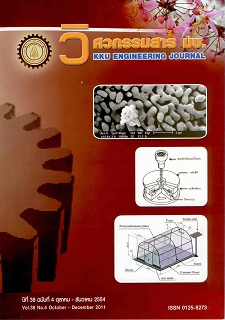Reduction of Non-conformities during the Wire Mesh Production Process Using the Six Sigma Technique
Main Article Content
Abstract
During the wire mesh production process; there occur different types of non-conformities ranging from a part or product that needs reworking to a defect that cannot be repaired. The objective of this research project was to use the Six Sigma Technique to reduce the large number of non-conformities found during the wire mesh production process. A define phase was first initiated in order to learn more about the current production process using process maps, after which problems for improvement were identified. Using a Pareto diagram and risk assessment, the study found that the major defect is that the horizontal mesh widths exceed specifications. The measure phase involved analyzing of the measurement system and determining the number of non-conformities found in the products. A brain storming exercise was held during the analyze phase between the researcher and the production and quality assurance teams, during which time a fishbone diagram was used to verify those factors causing the aforementioned problem. The improve phase then looked at altering work procedures and upgrading equipment, applying ‘Poka Yoke’ to prevent work errors. Then, numbers of non-conformities were compared between the original work procedures and equipment, and the proposed work procedures and upgrading equipment using a Mann-Whitney test. It was found that the proposed work procedures and upgrading equipment do reduce the number of non-conformities. During the control phase, work standards were determined. After carrying out these changed, non-conformities dropped from an average of 18.68 defects per 1,000 square meters to 7.81 per 1,000 square meters; an improvement of 58.19%.
Article Details
How to Cite
Sriwichai, Y., & Chompu-inwai, R. (2012). Reduction of Non-conformities during the Wire Mesh Production Process Using the Six Sigma Technique. Engineering and Applied Science Research, 38(4), 373–383. retrieved from https://ph01.tci-thaijo.org/index.php/easr/article/view/1675
Issue
Section
ORIGINAL RESEARCH
This work is licensed under a Creative Commons Attribution-NonCommercial-NoDerivatives 4.0 International License.



